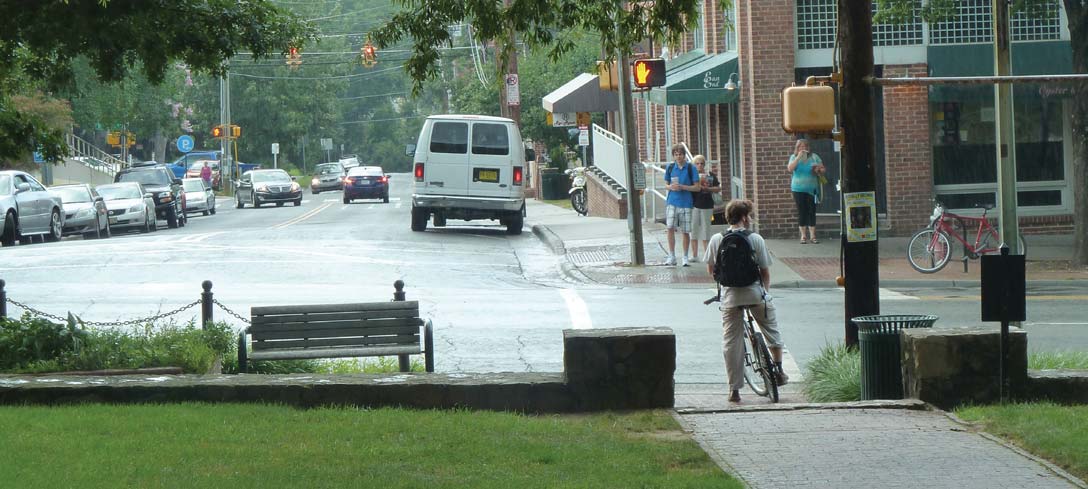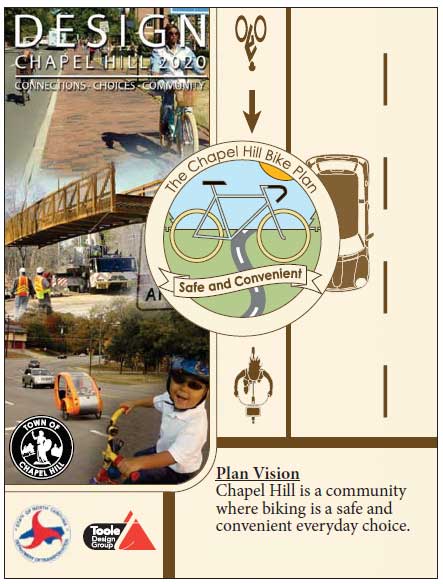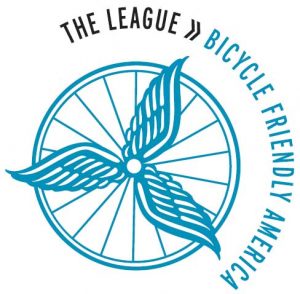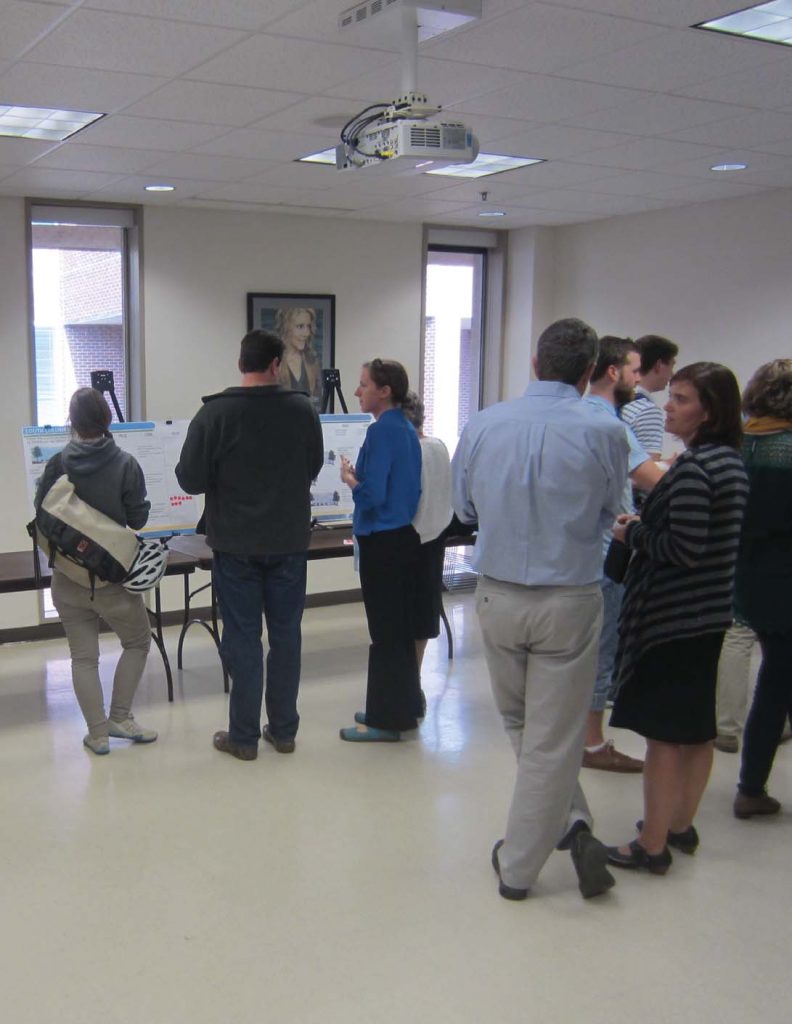Introduction
The University of North Carolina at Chapel Hill (UNC-CH) is committed to the development of a sustainable transportation system. UNC-CH has demonstrated this commitment to sustainability with projects such as the establishment of a fare-free bus system, enrichment of the pedestrian pathway system throughout campus, addition of a bike lane on South Columbia street, inclusion of shower facilities for commuters in new buildings, construction of a pedestrian bridge over Manning Drive and the development of educational outreach programs for all modes of travel. In addition to these projects, several campus groups have formed to support bicycle planning and facilities. While these actions demonstrate commitment to sustainable transportation, there remains a need for an overall plan to organize and guide the growth of the bicycling system and culture at UNC-CH. This Bicycle Master Plan (the Plan) was created to fulfill that need.
The Plan analyzes existing conditions, recommends bicycle facilities, gives best practice examples of facilities and programs at peer institutions and offers information about educational programs. The intent of this Plan is to institutionalize bicycling as part of the UNC-CH transportation system. This Plan also recognizes that improving existing bicycle facilities, adding new facilities where needed and providing more educational opportunities to the campus community will improve safety for all modes of travel even as the number of bicyclists increases.
The goals of the Plan cannot be achieved in isolation from other University, Town of Chapel Hill (the Town) and North Carolina Department of Transportation (NCDOT) initiatives. The Plan must be incorporated not only into the UNC-CH transportation system, but also integrated with local and regional transportation systems. To aid in this process, UNC-CH has created a new Associate Director of Transportation position within its Department of Public Safety (DPS). This staff member, along with a new technical transportation planner, will greatly aid in ensuring the success of this Plan.

The thought behind this vision is two-fold. Today, bicycling is an informal part of campus life, but it should be recognized formally as a fundamental component of how UNC-CH functions. Secondly, the vision statement highlights the fact that bicyclists travel within and across campus boundaries, so careful coordination with the Town and NCDOT must occur to ensure seamless trips in and out of campus.
The vision statement is supported by five goals that seek to improve, increase and integrate bicycling at UNC-CH. The goals create a framework for this Plan and are central to the development of the recommendations it proposes. The Plan goals are:
Increase safety for all campus users including bicyclists, pedestrians, transit users and drivers.
The large population of students, workers and visitors who access the UNC-CH campus each day can result in congested roads and pathways. Crowded conditions often lead to conflicts among bicyclists, pedestrians and vehicles. Feedback received throughout the Plan process indicated that the campus community wants to improve safety for travelers using all modes.
Build a culture of bicycling among UNC-CH students, staff and faculty.
Making bicycling a more visible and attractive transportation choice has many benefits: as more people choose to ride bikes on and near campus, others will be encouraged to do the same. Developing a culture of bicycling will also help UNC-CH achieve designation as a Bicycle Friendly University SM.1 Other universities have found this designation helps them find funding for bicycle improvements, and advances their reputation as sustainable campuses.
Use education and enforcement to improve bicycling and safety for all road and pathway users.
Many students and visitors come to campus from communities where bicycling is not the norm, so the University has a responsibility to educate bicyclists, pedestrians and drivers about how they should interact with other modes of travel. Education, combined with enforcement of applicable policies and laws, will be important for all travelers.
Create well-known and connected north-south and east-west bicycle routes through campus.
The creation of well-marked, easy-to-follow routes through campus will make bicycling easier and aid new bicyclists in choosing where to ride. These routes will be created through on-the-ground infrastructure improvements.
Fund bicycle improvements on campus.
Bicycle friendly universities tend to have dedicated sources of funding for infrastructure, staff, programs, signage, promotional materials and other elements.
1 The Bicycle Friendly University program is administered by The League of American Bicyclists. The application program ranks universities throughout the country on their bicycle friendliness. These goals are interdependent. Increased safety is achieved, in part, through the education of all road users. A strong bicycle culture helps bicycling become an everyday transportation choice. Similarly, all of the programs and infrastructure projects can only be accomplished with funding from the University.

The Town and UNC-CH developed individual bicycle master plans within approximately the same time frame and led by the same consultant: Toole Design Group. This allowed for coordination of the plans. The integration of the UNC-CH plan with the local Town plan is important and will make it easier to align this Plan with regional planning efforts.
Coordination with the Town included presentation of information for both plans at Town and UNC-CH community meetings, sharing of an interactive online “WikiMap” to capture comments on existing conditions and sharing of individual survey results and information between the UNC-CH and Town project managers.

The national Bicycle Friendly University SM (BFU) program, created and run by The League of American Bicyclists, recognizes university applicants for improving bicycling conditions on campus. The program scores universities in the following areas:
The Five “E’s”
- Engineering: Creates safe and convenient places to ride and park a bicycle.
- Education: Gives people of all ages and ability levels the skills and confidence to ride.
- Encouragement: Creates a strong bike culture that welcomes and celebrates bicycling.
- Enforcement: Ensures safe roads for all users.
- Evaluation and Planning: Plans for bicycling as a safe and viable transportation option.2
Each of these “E’s” is important to bringing about the holistic change that transforms a campus into a BFU. There are currently 75 BFUs across the country. A number of UNC-CH’s peer institutions in the UNC system and throughout the Southeast have achieved this designation, including:
- UNC-Greensboro (Bronze)
- UNC-Wilmington (Bronze)
- University of Virginia (Bronze)
- Duke University (Bronze)
- North Carolina State University (Bronze)
- University of Maryland (Silver)
While UNC-CH has not yet applied for BFU status, students and DPS and Facilities Planning staff members have reviewed the program application and begun to coordinate for a 2014 application.
Consequently, the Five “E’s” framework was used to assess existing conditions at UNC-CH and to organize the recommendations of this plan document.
2 Definitions from The League of American Bicyclists.
The Mineta Transportation Institute developed an evaluation methodology in 2012 that rates streets and bike facilities by the amount of stress a cyclist would experience when riding on them. “High-stress” roads are those with higher speeds, a larger amount of daily traffic and minimal bicycle facilities.
These roads are considered comfortable for riding by the group of bicyclists who are Strong and Fearless, those with a high tolerance for traffic stress.
“Low-stress” roads are those where bicyclists share the road with lower-speed and lower-volume traffic. Low-stress facilities also include ones that provide greater separation from traffic, such as a buffered bike lane where a striped area of roadway puts motor vehicles farther from bicyclists than the single strip of a traditional bike lane. These types of facilities are comfortable for a wider range of bicyclists who are less tolerant of traffic stress.

